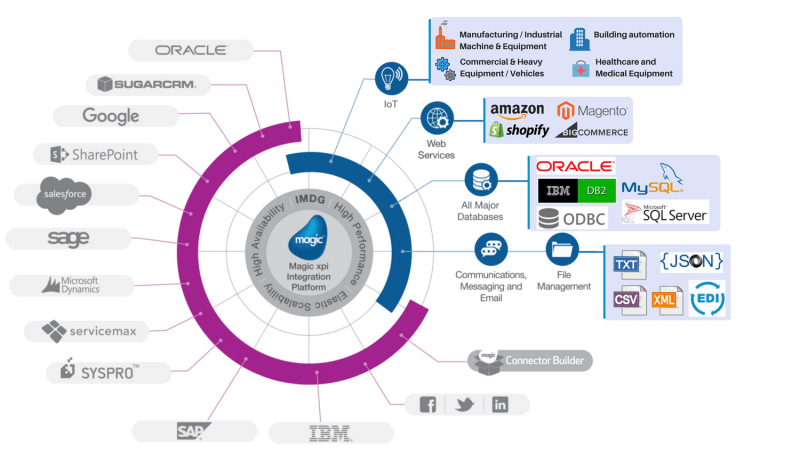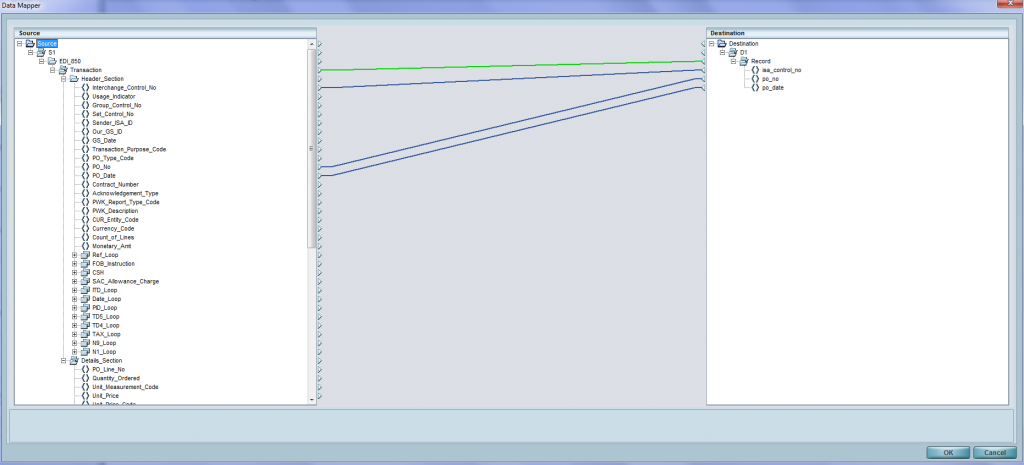Integration platform for business efficiency
Information technology is developing rapidly. Many experts call IT the fastest-growing sphere of human activity. Systems and applications integration plays an important role in the IT space, and has a significant impact on company performance as well as on all industrial and commercial sectors. That’s why we’ve seen a surge in corporate interest when it comes to integration…
What is “systems integration”?
According to Wikipedia: system integration is defined in engineering as the process of bringing together subsystem components within a single system (an aggregation of cooperating subsystems so that the system can provide overall functionality).
But it would be a mistake to think of “systems integration” as simply the assembly of hardware and software tools; the essence of the concept is much broader than that.
“Systems integration” is an activity aimed at improving a company’s efficiency, decision-making and information quality through an automated process, where “heterogeneous” systems can communicate and integrate with each other in real time.
Most companies in today’s business environment run many “heterogeneous” systems and software, yet there is no established communication between them. This type of environment creates a lot of inefficiencies and poor quality information, which in most cases leads to reduced profits and delays in management decisions.
Automated system integration acts as a bridge where data flows between heterogeneous systems, software applications and databases in multiple directions, based on predefined business rules, as if the systems were totally “homogeneous”.
Why do companies need “systems integration”?
Increasingly, companies are arming themselves with software and hardware to solve specific business needs. All this while adding new modules and “stand-alone” systems to their IT management system. Most of the time, these solutions don’t communicate natively with each other.
While the adoption of a specific software application (cloud or on-premise) may meet a company’s business requirements and solve a business problem, it will create a series of new challenges in its own right:
- Redundant data entry; most of the data already exists in another system.
- Need to hire more staff to manage more systems
- Open the door to more human error when managing new systems.
The above challenges are relevant to companies of all sizes, whether small, medium or large.
How to solve integration problems?
To solve the integration problems identified in the previous point, companies should not hesitate to adopt integration projects to synchronize and orchestrate IT software, databases, processes and equipment.
To achieve this, companies will need to adopt an “integration platform” capable of exhibiting the following properties:
- Easy to use (drag and drop)
- No coding required
- Quick to learn, develop and deploy
- Easy debugging and simple error handling
- Several options for triggering and launching processes and flows
- Able to connect to most of the databases commonly used in today’s market
- Able to connect to brand-name software systems (e.g. SAP, Salesforce, Oracle, SugarCRM …) with connectors certified by the manufacturer.
- Generic API-based connectors for IoT projects
- Extensible to go beyond “out-of-the-box” where you can build your own connectors for specific solutions.
Benefits of systems integration
The benefits of implementing a robust API-based integration that can connect to a wide range of enterprise ecosystems are invaluable. Here are the 5 advantages:
- Real-time data synchronization
Having a robust integration platform responsible for orchestrating and synchronizing data and processes, eliminates delays in data publication. Data is synchronized between different systems in real time, without the need for human intervention.
- Faster data processing
With an automated integration platform, which is able to synchronize data and trigger flows and processes efficiently based on rules and conditions, data processing also becomes real-time, eliminating the need for data extraction, transformation and loading (ETL). No need for a separate ETL tool.
- Improved employee productivity
Data synchronization and orchestration obviously eliminate a lot of time and effort for employees to manage and enter/extract data from one system to another. Employees can focus on business-related problems business-related issues, where they can generate more revenue, rather than entering and manipulating data in “heterogeneous” systems.
- Faster decision-making
Having a robust integration platform, with all the benefits identified above, business leaders will be able to make quick decisions and avoid the time-consuming process of extracting data from different systems and merging the sets to obtain a unified data sheet.
- Increased profitability
Taken together, the above benefits will significantly increase the profitability of any company with heterogeneous IT systems and applications.
 What are the signs that a company needs an integration platform?
What are the signs that a company needs an integration platform?
Here are the main signs in any company that an integration platform is needed to improve business processes.
- Your company has several stand-alone software systems, with no direct links between them.
- Your company has a combination of on-premise and cloud-based software solutions that are not connected.
- Employees spend a lot of time on their daily work, feeding several systems
- Your company has an e-commerce site managed separately from the internal ERP system
- The company’s IT department is unable to provide reports and analyses on time.
- Unable to meet your customers’ business requirements, deliver within 48 hours
- There are major data mismatches between systems and solutions, due to redundancy.
- Many employees work on report writing and data entry work
- No visibility of company equipment data and performance (production machines, cameras, field service data, etc.).
Are you looking for an integration platform solution for your company?
For over 18 years, our company has been an official partner of Magic Software Enterprises, a global provider of software solutions, supplying Magic xpi, an integration platform based on a fully reliable SOA, and API-driven for all necessary connections.
The Magic xpi business integration platform provides enterprise-level integration, business process automation and data synchronization, with complete security and proven reliability.
Implementing a wide range of certified and optimized connectors and adapters, Magic xpi integrates leading ERP, CRM, financial and other enterprise systems, such as SAP, Oracle, Salesforce, Microsoft, IBM, Google, and many more.
Are you looking for integration solutions? Contact us today



